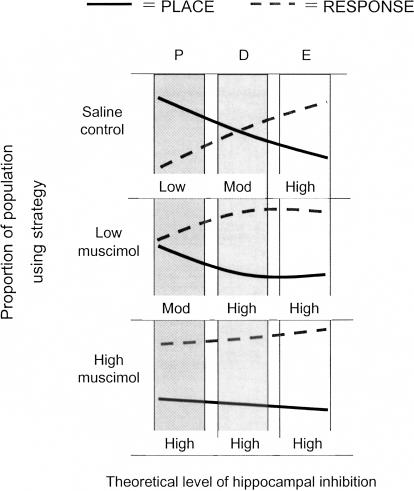Figure 4.
Theoretical representation of the effects of estrous cycle and intrahippocampal muscimol on hippocampal inhibition and learning strategy. Graphs depict the relative use of place and response strategies at proestrus (P), diestrus (D), or estrus (E) under saline, low muscimol, and high muscimol. Theoretically, hormonal changes across the estrous cycle may act through the GABAergic system to change inhibitory tone in hippocampus and thus change strategy selection: The greater the inhibition, the more likely rats are to use a response strategy. A cycle-related shift in strategy bias is seen in saline controls, with proestrus rats using place and estrous rats using response. With increasing doses of muscimol, and presumably increasing levels of hippocampal inactivation (low, moderate, high), strategy biases shift toward the response strategy.

